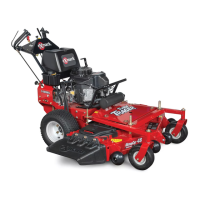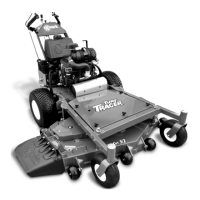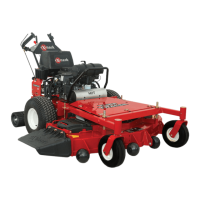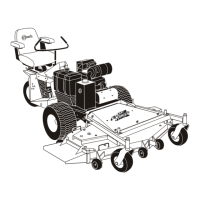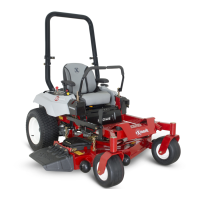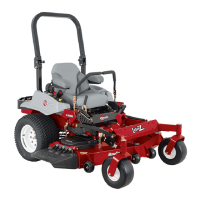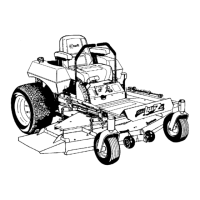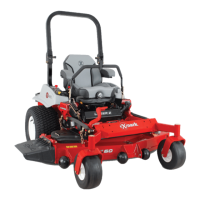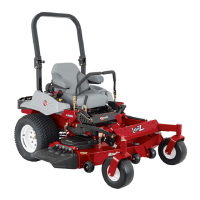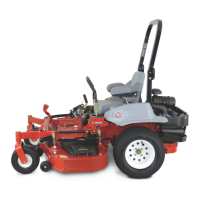- 20 -
DANGER
POTENTIAL HAZARD
♦ In certain conditions gasoline is extremely flammable
and highly explosive.
WHAT CAN HAPPEN
♦ A static charge can ignite gasoline vapors. A fire or
explosion from gasoline can burn you, others, and
cause property damage.
HOW TO AVOID THE HAZARD
♦ Purchase and store gasoline only in an approved
container.
♦ Always place gasoline containers on the ground away
from your vehicle before filling.
♦ Do not fill gasoline containers inside a vehicle or on a
truck or trailer bed because interior carpets or plastic
truck bed liners may insulate the container and slow
the loss of any static charge.
♦ When practical, remove gas-powered equipment from
the truck or trailer and refuel the equipment with its
wheels on the ground.
♦ If this is not possible, then refuel such equipment on a
truck or trailer from a portable container, rather than
from a gasoline dispenser nozzle.
♦ If a gasoline dispenser nozzle must be used, keep the
nozzle in contact with the rim of the fuel tank or
container opening at all times until fueling is complete.
4.2.2 Refer to Maintenance and Adjustment Section 5 and perform all of the
necessary inspection and maintenance steps.
4.2.3 Familiarize yourself with the controls and operation of unit. See Controls
section 4.1 and Operating Instructions section 4.3.
4
.
3 OPERATING INSTRUCTIONS
4.3.1 Refer to Engine Owner’s Manual for detailed operating instructions regarding
the engine.
4.3.2 Starting Engine: Operator must have
blade drive disengaged
and
transmission in neutral
.
Open
fuel shut-off valve.
NOTE: A cold weather starting kit has been added for ease of starting in
either cold weather or when the unit has not been run for a period of time.
To use cold start kit: (Manual start units only)
a) Place shifter in neutral position.
b) Pull split ring straight out the side of the unit, and hook the ring over
the lower rear hydro control shield bolt.
c) Start engine. Refer to the following guidelines for further starting
suggestions.
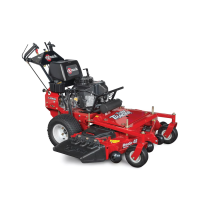
